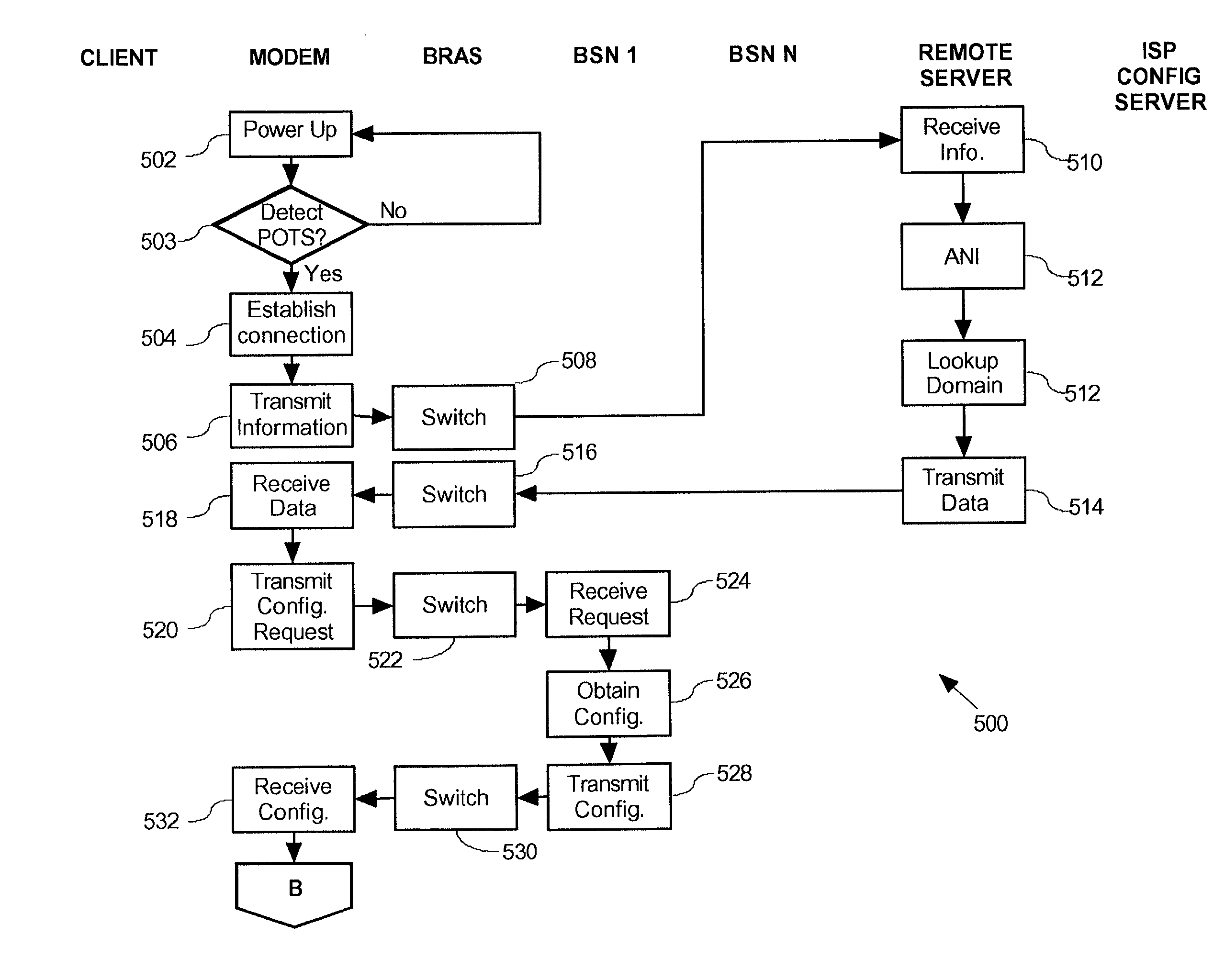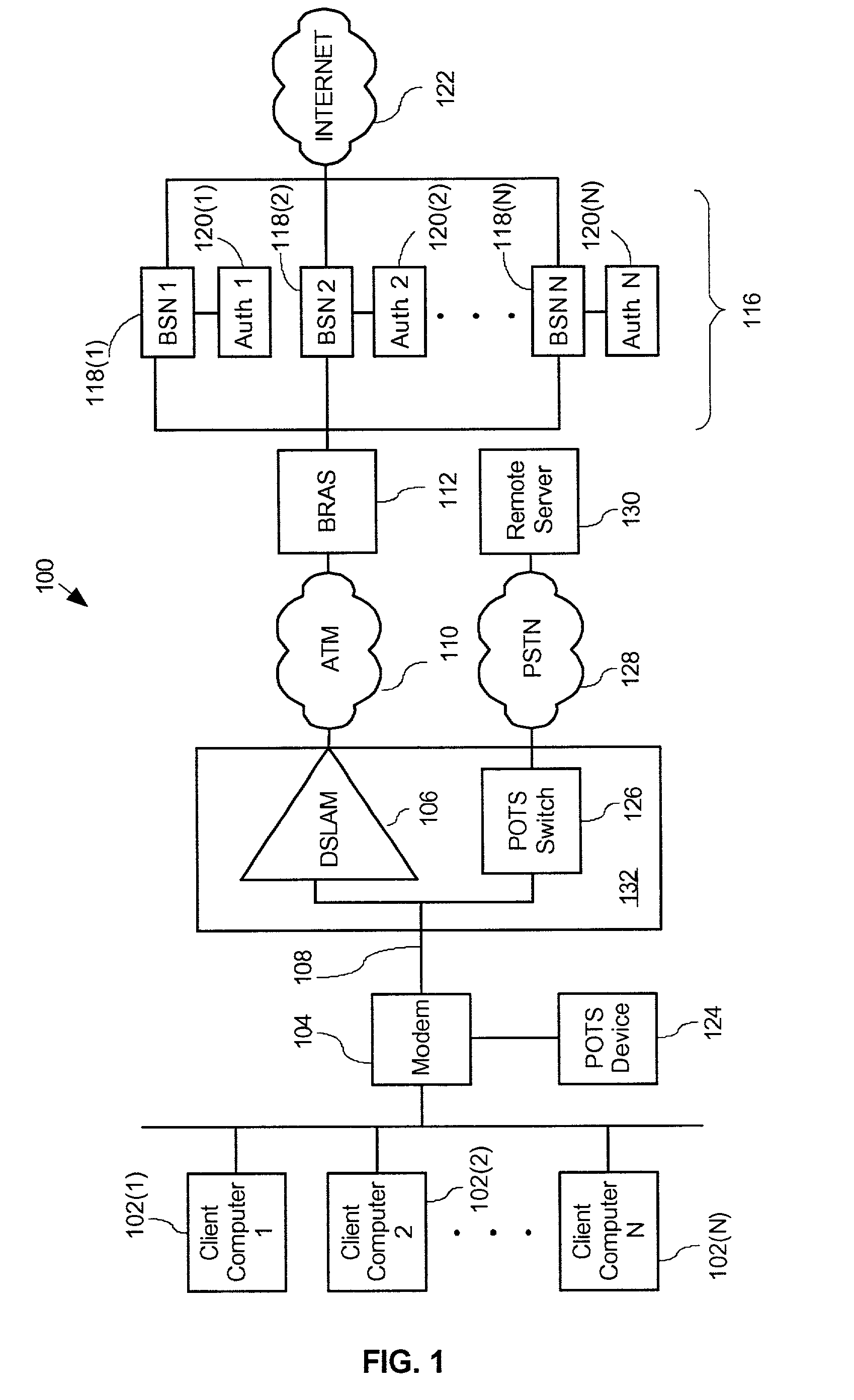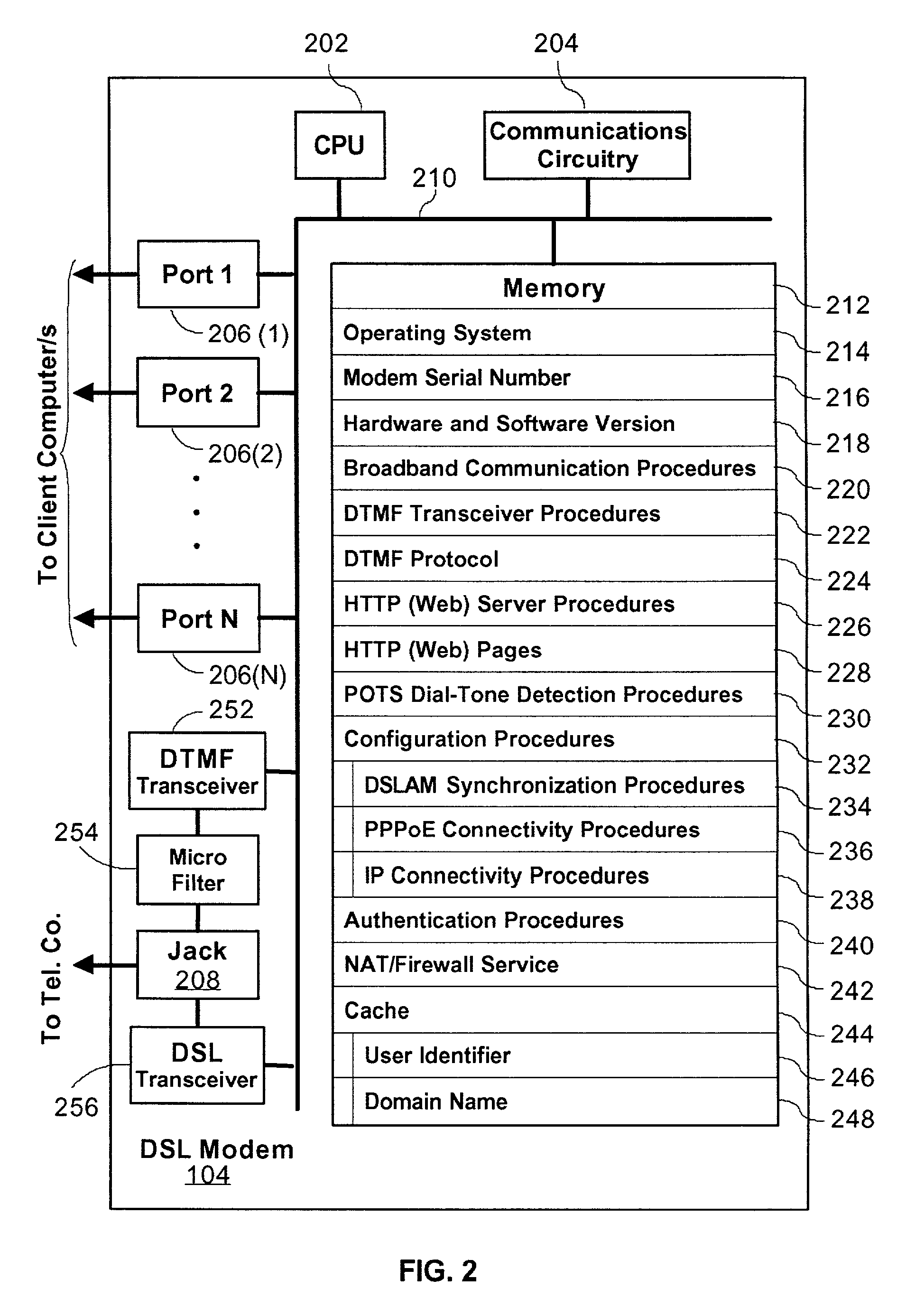System and method for provisioning broadband service in a PPPoE network using DTMF communication
a point-to-point over ethernet and network provisioning technology, applied in data switching networks, time-division multiplexing selection, digital transmission, etc., can solve the problems of insufficient speed of analog modems over regular telephone lines, inconvenient provisioning of pppoe networks, and high cost of isdn, so as to save valuable resources for isps. , the effect of simplifying the provisioning of a pppoe network
- Summary
- Abstract
- Description
- Claims
- Application Information
AI Technical Summary
Benefits of technology
Problems solved by technology
Method used
Image
Examples
Embodiment Construction
[0048]For ease of explanation the following description and drawings represent a DSL system. It should, however, be clear to those skilled in the art that the present invention may be embodied in any Broadband system without departing from the spirit and scope of the present invention as defined in the accompanying claims. A Broadband system, as used herein, is any high speed communication system that communicates over a Broadband circuit and includes the use of a Broadband modem or gateway, such as a DSL modem, cable modem, or the like.
[0049]FIG. 1 is a diagrammatic view of the system architecture 100 according to an embodiment of the invention. Traditional telephone services, otherwise known as Plain Old Telephone Systems (POTS) allow telephone users to communicate with one another over a Public Switched Telephone Network (PSTN). Typically, copper telephone wires 108, also known as twisted pairs, connect analog input devices (POTS devices) 124, such as telephone sets, to a telepho...
PUM
 Login to View More
Login to View More Abstract
Description
Claims
Application Information
 Login to View More
Login to View More - R&D
- Intellectual Property
- Life Sciences
- Materials
- Tech Scout
- Unparalleled Data Quality
- Higher Quality Content
- 60% Fewer Hallucinations
Browse by: Latest US Patents, China's latest patents, Technical Efficacy Thesaurus, Application Domain, Technology Topic, Popular Technical Reports.
© 2025 PatSnap. All rights reserved.Legal|Privacy policy|Modern Slavery Act Transparency Statement|Sitemap|About US| Contact US: help@patsnap.com



